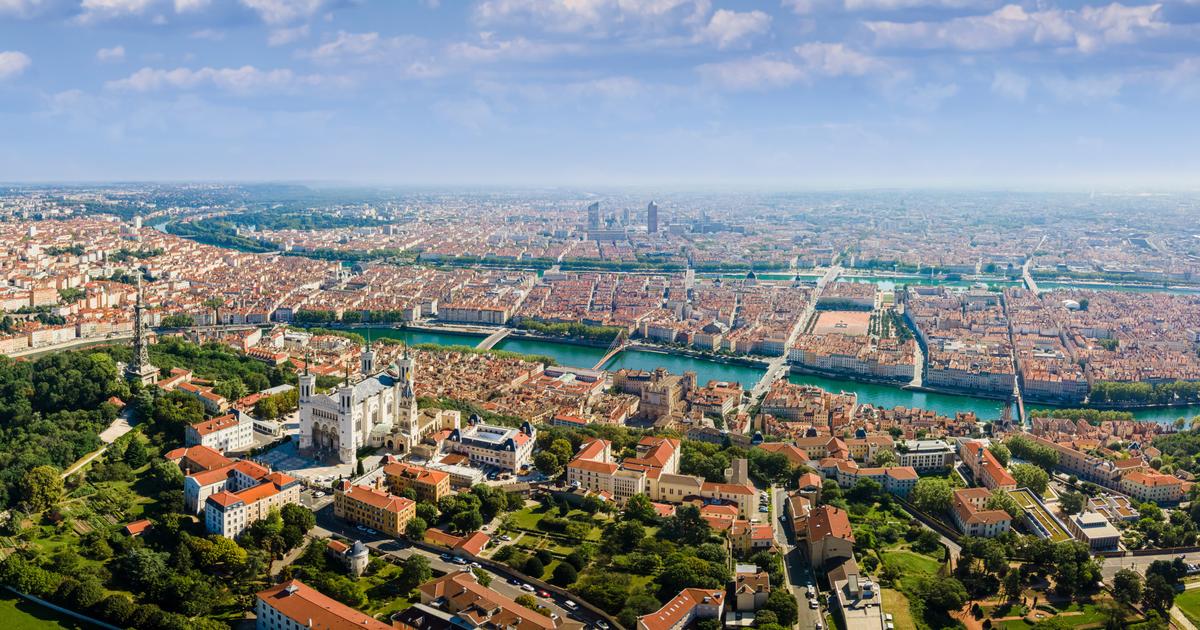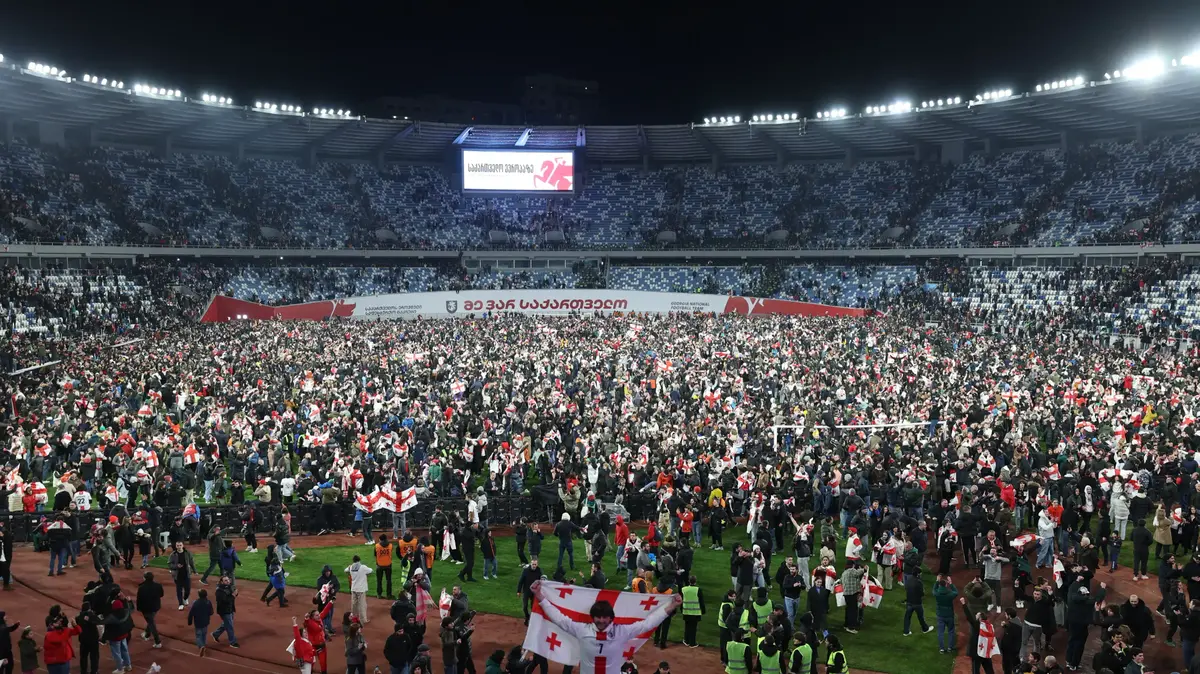Georgia: History, Politics, Population, and Geography
Created: 12/18/2021, 8:16 PM
Georgian Orthodox Sioni Cathedral in Tbilisi © Konrad Zelazowski / IMAGO
Georgia impresses with its geography and a living history.
The Black Sea state has made significant political and economic advances in recent years.
It maintains close trade relations with the EU and is an insider tip for tourists.
Tbilisi - The state of Georgia was famous in ancient times, as evidenced by Greek mythology about the Argonauts and their search for the Golden Fleece.
The legendary Kingdom of Colchis was located in what is now western Georgia.
Since many stages of this ancient journey are precisely described, tourists can still follow in the footsteps of Jason and the ship Argo.
Georgia: interesting facts about the geography of the state
Georgia is located in the Middle East and is therefore an important interface between Europe and Asia.
The state borders Russia to the north, Azerbaijan to the southeast and Armenia and Turkey to the south.
To the west is the Black Sea.
The geography of the country reveals some interesting details: Georgia covers an area of 69,700 square kilometers, which is roughly the size of Bavaria or Ireland.
A good 87 percent of these are mountains and foothills.
About half of the country is higher than 1,000 meters.
The Shchara with 5,201 meters forms the highest mountain in the country.
The surface structure of Georgia is composed as follows:
The main extension of the Greater Caucasus lies in the north of the state.
In the south are the western ridge of the Lesser Caucasus and the edge of the Armenian highlands.
In the east the Transcaucasian Depression connects to the mountains.
In the west the land slopes down to the sea and forms the Colchian Plain.
The state is also rich in water.
The Kura forms the largest river with a total length of 1,364 kilometers.
The largest lake in the country is the Parawani with an area of around 37.5 square kilometers.
Interesting facts about the Georgian climate
There are great climatic differences within Georgia.
In the coastal region, subtropical, humid and warm climates prevail.
To the east the climate is more and more continental and arid.
There are warm summers and cold winters with little snow.
State of Georgia: Key dates in history
In ancient times Georgia was under the rule of the Romans, later under the rule of the Persians and Byzantines.
The history of the state has had some interesting milestones since the Middle Ages:
At the end of the 10th century, a unified Georgia without the supremacy of the Byzantines emerged on what is now the area of the state.
Georgia was the strongest power in Transcaucasia between the 11th and 13th centuries.
In the 16th century the state split into the three kingdoms of Imereti, Kartlien and Kakheti as well as some principalities.
In 1801 the Russian tsar annexed the two eastern Georgian regions of Kakheti and Kartlien, the other eastern Georgian regions followed a few years later.
In 1918, Georgia broke away from Russia after the October Revolution and declared itself an independent democratic republic.
In 1921 Soviet soldiers invaded Georgia and it became part of the Soviet Union.
On April 9, 1991, Georgia declared itself an independent state again after the collapse of the Soviet Union.
In the early 1990s there were civil wars with the secession of South Ossetia and Abkhazia.
In 2008 Georgia started the Caucasus War with Russia over South Ossetia and Abkhazia.
State of Georgia: Demographics
Georgia has about 3.7 million inhabitants (as of 2019).
This corresponds to a population density of around 65 inhabitants per square kilometer.
This means that the state is rather sparsely populated.
Most of the people live in the big cities.
The most important are:
Tbilisi (capital): 1,082,400 inhabitants (as of 2016)
Batumi: 154,600 inhabitants (as of 2016)
Kutaisi: 147,900 inhabitants (as of 2016)
Rustavi: 126,000 inhabitants (as of 2016)
Sukhumi: 63,300 inhabitants (as of 2016)
Gori: 48,300 inhabitants (as of 2016)
Zugdidi: 42,700 inhabitants (as of 2016)
Poti: 41,500 inhabitants (as of 2016)
Georgia's demography is also multi-ethnic.
The more than 25 ethnic groups in the state include:
80 percent Georgians
6.5 percent Azerbaijanis
5.7 percent Armenians
1.5 percent Russians
There is also a good one percent each of Ossetians, Assyrians and Abkhazians.
The rest of the population comes from other tribes such as Kurds or Lasen.
The official language in Georgia is Georgian.
In the northwest of the state is the autonomous republic of Abkhazia, where the residents also speak Abkhazian.
Georgia: The Politics of the State
Georgia is a parliamentary republic with centralized administration.
As in the United States, the head of state is the president, who is also the head of government and, if necessary, the top military commander.
The president of the state heads a cabinet of 14 ministers and several government committees.
He also nominates the Prime Minister, who has to be approved by the Georgian Parliament.
The current President of Georgia has been Salome Zurabishvili since December 1, 2018.
She is the first woman to hold this post in Georgia.
The former diplomat and French ambassador held the post of Foreign Minister of Georgia from 2004 to 2005.
In 2006 she founded the opposition party "Georgia’s Way".
In addition, the "United National Movement (ENM)" is the most influential party in the country.
It was a ruling party before 2018 and is currently the sole opposition.
In the parliamentary elections of 2020, the ENM accused “Georgia's Way” party of electoral fraud and electoral influence.
International observers did not confirm these claims.
Nevertheless, sections of the opposition refused to take up their work and did not recognize the victory of "Georgia's Way".
Since then there have been repeated protests and government crises in the state.
Georgia and the economy
When the Soviet Union collapsed in early 1990, Georgia plunged into a severe economic crisis.
The once prosperous state was becoming increasingly impoverished.
The main reasons for this were the civil wars and the economic blockade in Russia.
Unemployment rose rapidly while production in the state in 1991 was only a quarter of the 1989 level.
Extensive loans, the reduction of bureaucracy and a currency reform gradually stabilized the economic situation in the country.
Today Georgia has a gross domestic product (GDP) of 15.89 billion dollars (as of 2020).
The main pillars of Georgia's economy are:
tourism
Agriculture
Mining
processing industry
The most important trade goods of the state are agricultural products such as wine, grapes, tea and citrus fruits. The country also exports the metals manganese and copper as well as small amounts of chemicals and textiles.
Electricity is becoming an increasingly important trade item.
Georgia produces most of its energy needs with the help of hydropower. With its numerous rivers, it generates so much green energy that it can supply other countries with it.
The main customers are Russia and Turkey.
State of Georgia: tourism and culture
Tourism was an important economic sector in Georgia even under Soviet rule.
A large number of sanatoriums, hotels and holiday complexes were built in the mountains and on the Black Sea coast in particular.
Popular travel destinations to this day are spas and cities such as:
Borjomi
Gagra
Sukhumi
Pizunda
Bakuriani
After the economic collapse in the early 1990s, this branch of the economy only gradually recovered.
From 2010 tourism developed again into an important sector.
In the period from 2010 to 2014 alone, the number of visitors to the country almost doubled.
In 2019, the hotel, restaurant and leisure industries accounted for eight percent of GDP.
Georgia is an insider tip in the travel industry due to its scenic beauty.
The locals call the state “God's own country” because, according to legends, Georgia served God as a place of rest to rest from the work of creation.
Another flagship of Georgia is its great hospitality and a lively and multifaceted culture.
There are still many living traditions in the Eastern European country.
Wearing national costumes, singing and dancing are widespread in everyday life.
Children learn the traditional songs and dance steps in kindergarten.









